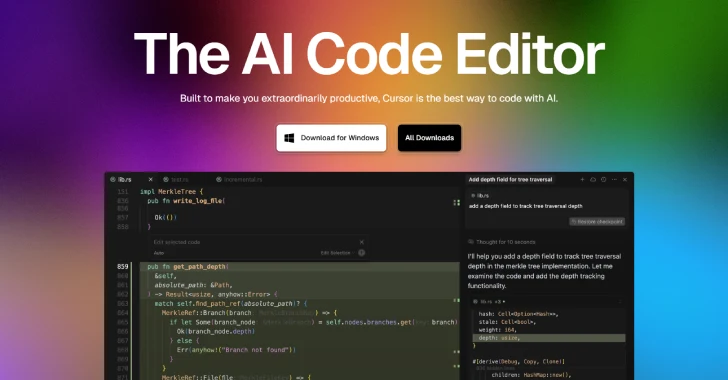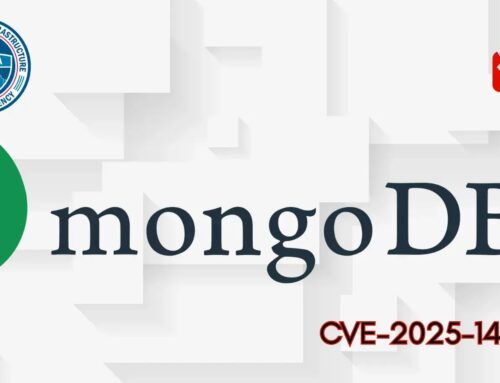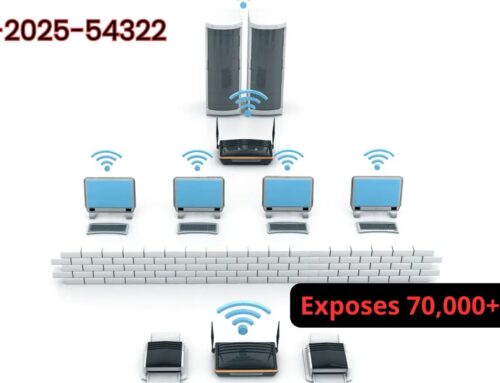
Cursor AI Code Editor Vulnerability Enables RCE via Malicious MCP File Swaps Post Approval
The digital landscape is fraught with hidden dangers, and even the most cutting-edge tools can harbor critical vulnerabilities. This is particularly true for applications at the intersection of artificial intelligence and software development. Recently, cybersecurity researchers unveiled a significant flaw in Cursor, an AI-powered code editor, that could open the door to remote code execution (RCE). This post dives deep into this vulnerability, dubbed MCPoison, and outlines crucial steps for developers and organizations to mitigate the risk.
Understanding the Cursor RCE Vulnerability: CVE-2025-54136
Check Point Research has disclosed a high-severity security flaw, tracked as CVE-2025-54136, in the Cursor AI code editor. This vulnerability carries a CVSS score of 7.2, signifying its substantial potential impact. Codename “MCPoison,” the flaw exploits a specific quirk in how Cursor handles modifications to its Model Component Files (MCP files). In essence, Cursor’s design allows for the dynamic updating of its underlying models by swapping out MCP files. The vulnerability stems from insufficient validation or sanitization during this critical process.
An attacker could craft a malicious MCP file and, through a sophisticated manipulation of the update mechanism, trick the Cursor editor into executing arbitrary code. This means that a seemingly benign operation – updating or modifying an AI model within the editor – could inadvertently lead to a complete compromise of the developer’s system, granting the attacker full control. The ‘post approval’ aspect mentioned in the source material suggests that even after a seemingly legitimate approval process, the underlying file swap could carry a malicious payload undetected.
The Mechanics of MCPoison: How Malicious MCP File Swaps Lead to RCE
The core of the MCPoison vulnerability lies in the integrity of the MCP file exchange. Cursor, like many AI-driven applications, likely relies on these modular components to update its AI models, improve performance, or introduce new features. The problem arises when the integrity checks for these files are not robust enough. Here’s a breakdown of the likely attack vector:
- Malicious MCP File Crafting: An attacker creates an MCP file embedded with malicious code, disguised to appear legitimate. This code could be anything from a simple command execution to a full-fledged backdoor.
- Exploiting Trust: The vulnerability capitalizes on the implicit trust Cursor places in these model files. If the editor doesn’t thoroughly validate the contents or origin of an MCP file before processing it, it becomes susceptible to injection.
- Post-Approval Execution: The “post approval” element is critical. It implies that even if an initial approval process (perhaps a user acknowledging an update) takes place, the actual file swap and subsequent execution of the malicious code occur in a manner that bypasses further scrutiny. This could involve a race condition, a faulty signature verification, or a logic error in how the approved file is handled during the final integration step.
- Remote Code Execution: Once the malicious MCP file is processed, the embedded code is executed within the context of the Cursor editor, which typically runs with the privileges of the logged-in user. This provides the attacker with RCE, allowing them to access, modify, or exfiltrate data, or even install further malware.
Implications for Developers and Organizations
The implications of CVE-2025-54136 are significant, especially for development teams heavily relying on AI-powered coding tools:
- Supply Chain Risk: This vulnerability introduces a potent supply chain risk. If malicious MCP files can be distributed or injected, the integrity of code developed using Cursor could be compromised from the ground up.
- Developer Workstation Compromise: A successful RCE means an attacker gains control over a developer’s machine. This puts source code, credentials, intellectual property, and internal network access at severe risk.
- Data Breach Potential: With RCE, attackers can exfiltrate sensitive data, leading to costly data breaches and reputational damage.
- Operational Disruption: Malware deployed via this vector could disrupt development pipelines, introduce backdoors into projects, or even lead to ransomware attacks.
Remediation Actions and Best Practices
Addressing the MCPoison vulnerability requires immediate attention and adherence to robust security practices:
- Patch Immediately: The most crucial step is to apply any official patches or updates released by the Cursor development team. Monitor their security advisories closely.
- Validate Sources: Only download MCP files or updates from official, verified sources. Avoid third-party repositories or untrusted channels.
- Implement Strong Endpoint Security: Ensure all developer workstations have robust anti-malware and Endpoint Detection and Response (EDR) solutions. These tools can help detect and block malicious activity even if an exploit is attempted.
- Principle of Least Privilege: Run development tools, including Cursor, with the minimum necessary user privileges. This limits the damage an attacker can inflict if RCE is achieved.
- Network Segmentation: Isolate development environments from critical production networks to contain potential breaches.
- Regular Backups: Maintain frequent and secure backups of all critical code and data.
- Security Awareness Training: Educate developers and IT staff on the risks of supply chain attacks, phishing, and the importance of verifying software updates.
Tools for Detection and Mitigation
While direct protection against this specific vulnerability relies on vendor patches, several tools can aid in overall endpoint security and vulnerability management:
| Tool Name | Purpose | Link |
|---|---|---|
| Endpoint Detection and Response (EDR) Solutions | Detects and responds to suspicious activities on endpoints, helping to identify RCE attempts. | Vendor-specific (e.g., CrowdStrike Falcon, SentinelOne, Microsoft Defender for Endpoint) |
| Static Application Security Testing (SAST) Tools | Analyzes source code for vulnerabilities that could lead to exploits (for developers analyzing their own code potentially affected). | OWASP SAST Tools |
| Dynamic Application Security Testing (DAST) Tools | Tests applications in their running state to find vulnerabilities (less direct for this specific vulnerability, but useful for overall app security). | OWASP DAST Tools |
| Vulnerability Scanners (Network/System) | Identifies known vulnerabilities in operating systems and installed software that could be leveraged by attackers after initial compromise. | Tenable Nessus, Rapid7 Nexpose |
Conclusion
The discovery of CVE-2025-54136 in the Cursor AI code editor serves as a stark reminder that even innovative development tools are not immune to critical security vulnerabilities. The MCPoison flaw, exploiting the mechanism of model component file swaps, highlights the importance of rigorous security validation during software updates and file processing. Developers and organizations must prioritize patching, implement robust endpoint security, adhere to the principle of least privilege, and foster a strong security-aware culture to defend against such sophisticated threats and protect their vital assets.





